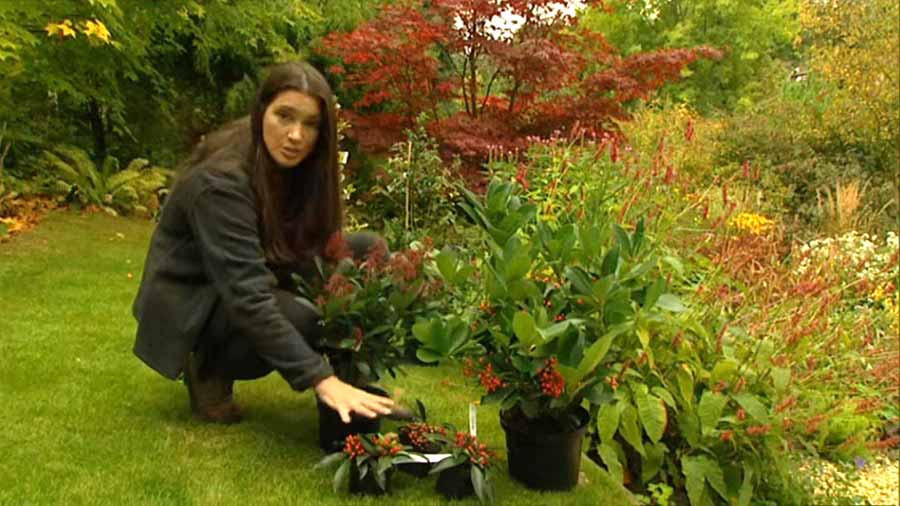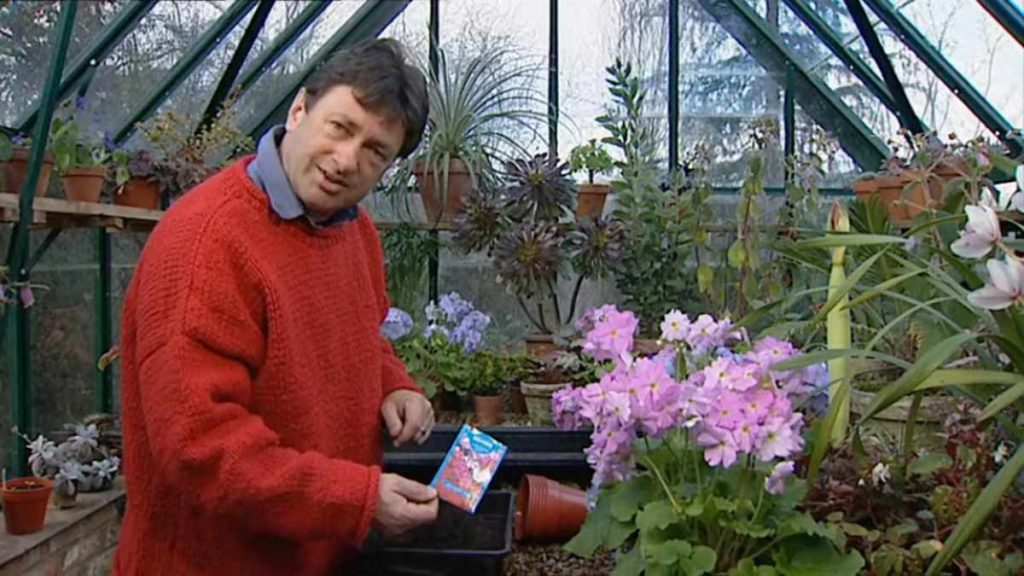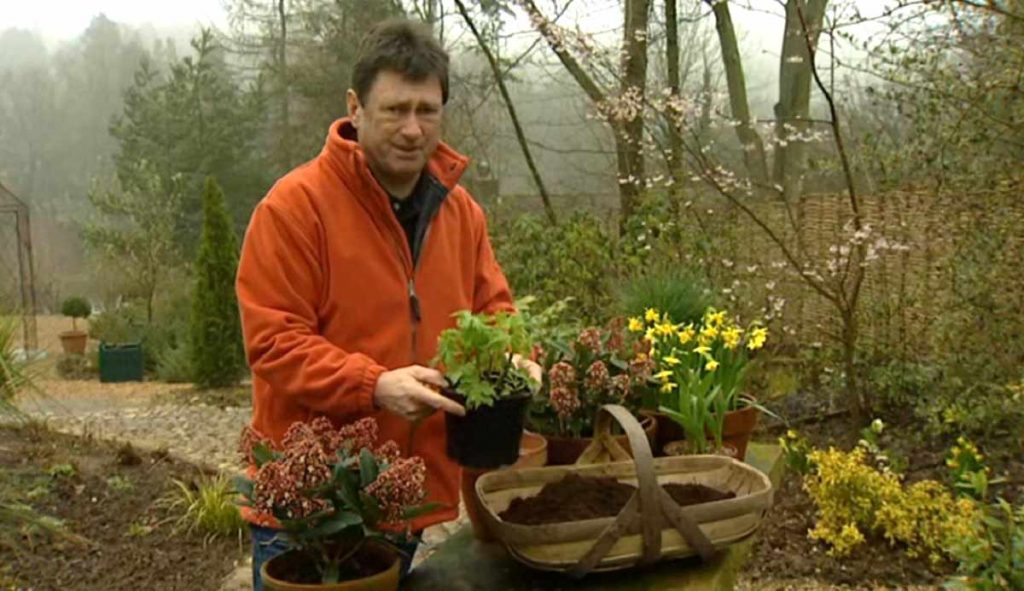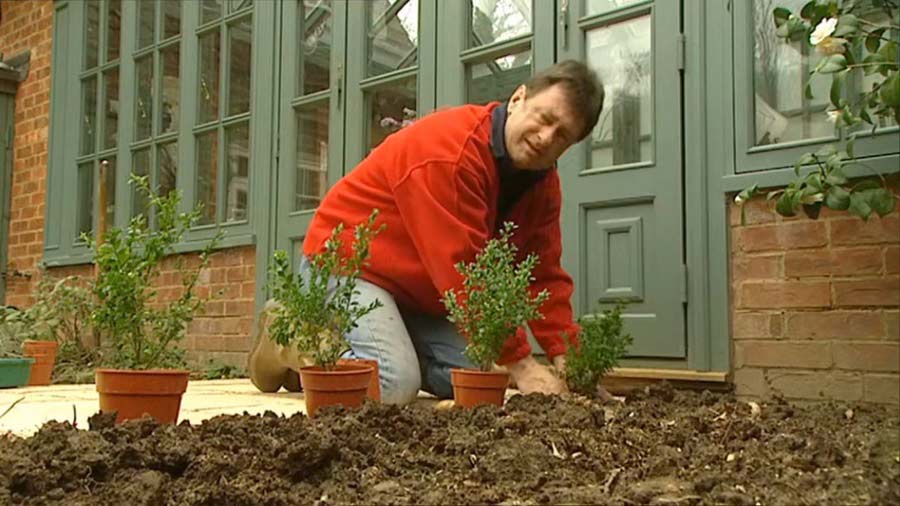Gardeners World episode 23 2002: Gardeners World team and Alan Titchmarsh present seasonal highlights from across the country, visit stunning gardens, meet the gardeners and find out their secrets of success.
Gardening show packed with good ideas, tips, advice from experts and timely reminders to get the most out of your garden, whatever its size or type.
Gardeners World episode 23 2002
Lawns – autumn care
Autumn is the time to examine lawns for signs of summer wear-and-tear, and treat if necessary. At this time of year, any treatment has time to take effect before temperatures fall and growth stops.
Lawns can suffer from a variety of fungal problems including red thread, fairy rings and take-all patch. Damage created by lawn pests such as leatherjackets and chafer grubs, as well as their predators, can be really devastating. Worm casts are also a nuisance in wet weather. Autumn is a good time to repair damage caused by fungal diseases or pests.
Aerating (or spiking) lawns allows better movement of air and water in the root zone. A well-aerated lawn will manage better in periods of drought or waterlogging. For an average lawn, aeration every two to three years should be adequate. Concentrate on areas that receive the most wear and those that are compacted.
Small areas can be spiked with a garden fork, spacing holes 10-15cm (4-6in) apart and deep. On clay or waterlogged soils use a hollow-tine aerator every three to four years. This extracts plugs of soil from the lawn. Hand held and motorized hollow tiners are available. After hollow-tining, sweep up the plugs and then rake a top-dressing (see below) into the holes to improve air and moisture penetration.
Skimmia
These neat evergreen shrubs earn their keep by giving year-round interest to shady borders, but they are also at home in containers. The fragrant spring flowers are followed by showy, lasting red or white berries on female plants which are a real bonus. Small, starter plants will give substance to winter window boxes and hanging baskets. They are also seldom damaged by deer or rabbits.
Slow growing, rounded shrubs with leathery pointed oval-shape leaves. The often fragrant white or greenish flowers in lilac-like clusters are borne in spring. Female and hermaphrodite forms produce red, or occasionally white or black, persistent autumn berries.
Skimmias prefer a position in light shade, but they will tolerate deeper shade or sunny spots. Only some, such as Skimia ‘Kew Green’, will grow well in full sun. Plant them in any soil as long as it’s not too wet or very dry.
If planted in poor and very dry soil, or if growing in full sun, the shrubs will struggle, leaves will start yellowing and plants will become spindly. This is often mistaken for iron deficiency, but skimmias are not ericaceous (acid soil loving) plants like camellias and rhododendrons. Watering, feeding and mulch will help. Alternatively reconsider their position.




